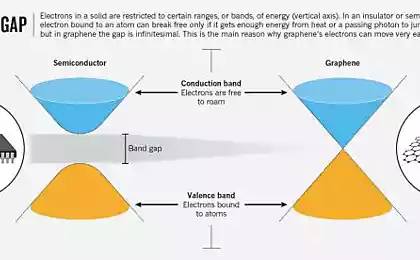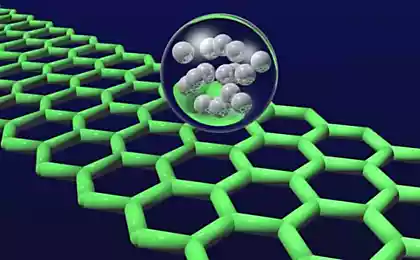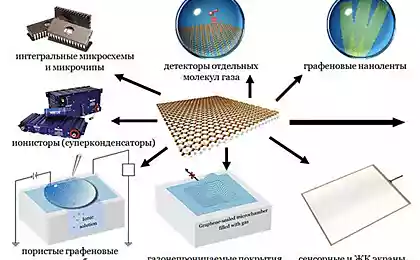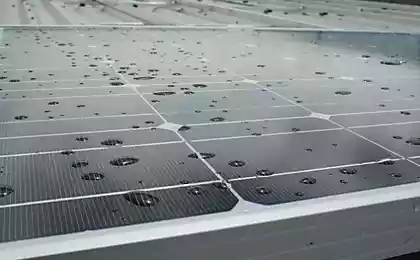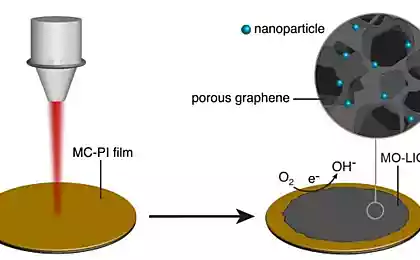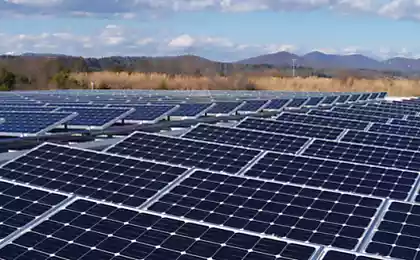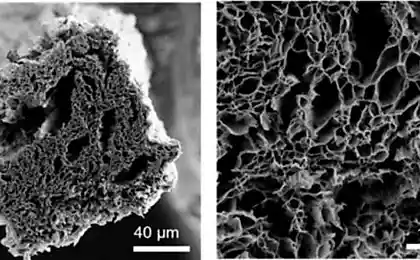522
China has developed a solar panel that can generate electricity from rain

Chinese engineers from the Institute of Materials Science and Engineering in Qingdao presented a prototype of the all-weather solar panels, generating electricity in the sun and in the rain. In the latter case, it manages to do this using the graphene layer deposited on the surface of the panels.
Solar panels silently produce "clean" energy (although their production and disposal are also a rather "dirty" and energy-intensive enterprises). Their main disadvantages - lack of energy in the absence of the sun, for example, at night or in bad weather. The second problem and try to solve the Chinese.
Graphene absorbs only 2% of visible light, so it is quite possible to be applied to solar panels without much loss of effectiveness. And in the rain, when there is no sun and the panel does not work, it takes a drop of rain. They, along with graphene, having a thickness of just one atom, form an electric double layer.
The positively charged ions in rainwater react with free electrons in graphene, which is an excellent conductor. The resulting interaction leads to the generation of electricity with the currents of the order of μA and voltage of a few tenths of a volt. graphene property of binding the positive ions are also used in the process of removal of lead ions from solutions of organic dyes
Other attempts to learn from bad weather electricity last year did researchers from the Georgia Institute of Technology. Their laminated glass receives energy from the wind and rain through the triboelectric effect.
Source: geektimes.ru/post/274202/







